The early days of Television must have been a fertile area for stage actors of the day – and for that matter film actors – who could be usefully employed – although in these times they would not have been that well paid.
It also boosted the careers of writers – notably Nigel Kneale who had an office at Lime Grove and as can be seen was involved with quite a lot of the play adaptations below
BELOW we see many quite well known actors of the era
1954 TV Plays
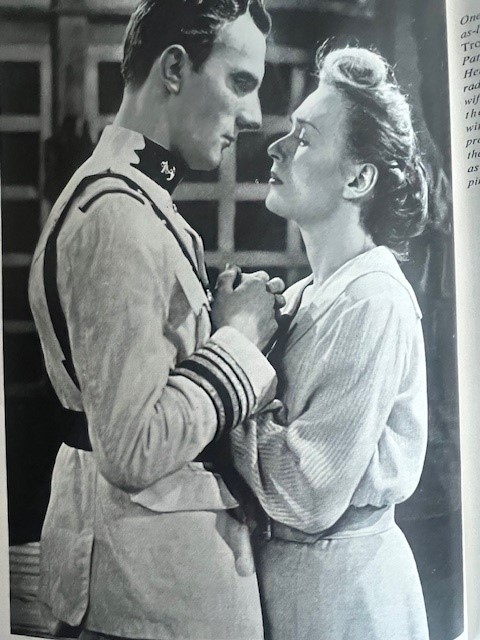
ABOVE – Tom Fleming and Greta Gynt in ‘It is Midnight, Dr. Schweitzer’ – Andre Morell took the role as Dr Albert Schweitzer
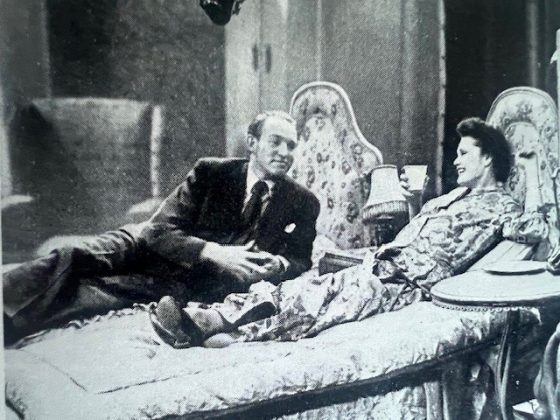
ABOVE – Broadcast as part of the BBC Sunday-Night Theatre series on 22 March 1953, The Troubled Airstarred Patrick Barr as Clement Archer and Joyce Heron as his wife, Kitty (both pictured). One critic of the time described it as “one of the most gripping dramas to have reached television.”
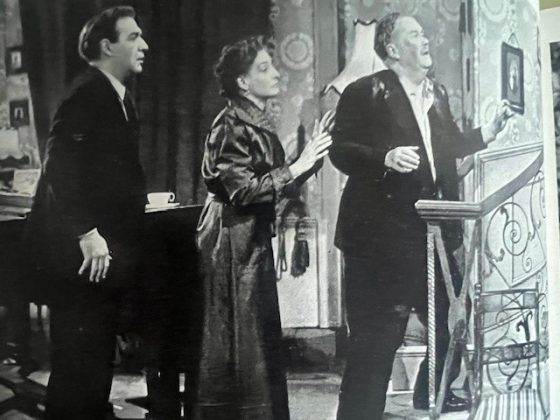
1953 TV Play ‘Shadow of the Vine’ with Robert Brown, Catherine Lacey and Arthur Young broadcast ‘Live’ on 17 March 1953 ABOVE
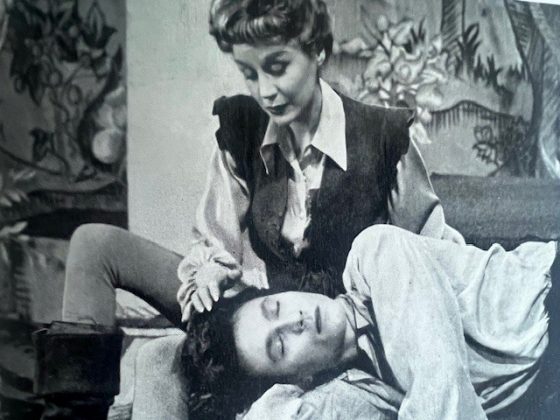
ABOVE – Margaret Leighton and Laurence Harvey – already in a relationship in real life – in the BBC play ‘As you Like It’
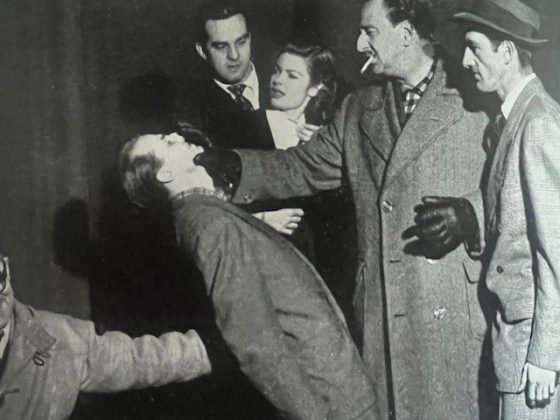
ABOVE – ‘Whistling in the Dark’ BBC TV
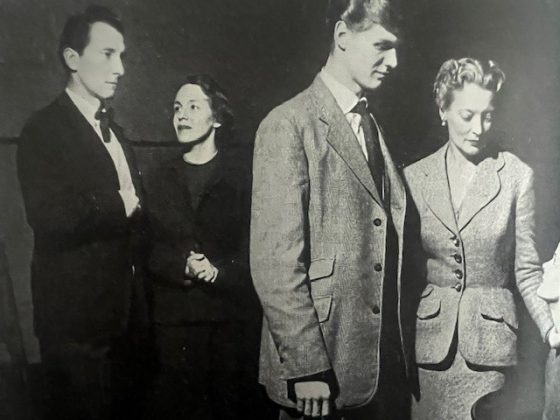
ABOVE – Peter Cushing, Maureen Prior, Michael Meacham and Eileen Peel in ‘Asmodee’ or ‘The Intruder’ BBC Television dECEMBER 9TH 1962
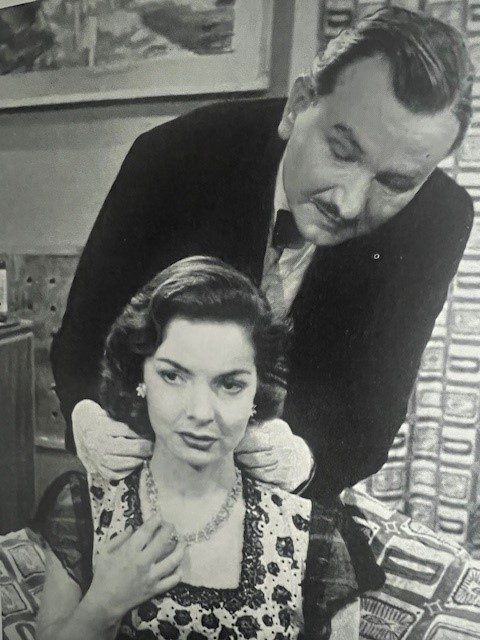
ABOVE Raymond Huntley and Elizabeth Sellars in ‘Take away The Lady which went out on BBC TV on Sunday April 26 of 1953 – and was repeated on the following Thursday with each performance ‘Live’
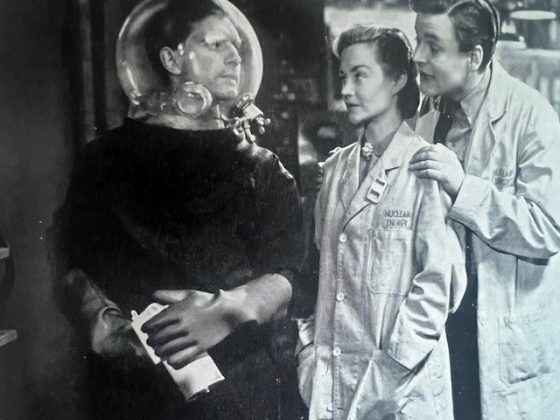
ABOVE – Ursula Howells with Philip Guard Left and Jack Watling
Nigel Kneale was involved in the acclaimed adaptation of Charles Irving’s paranoid nuclear chiller Number Three (1 February 1953) which he co-wrote with George F Kerr. At a remote atomic research station, scientists working on a new form of nuclear power discover that their leader plans to create a weapon potentially even more devastating than the H-bomb. The Listener‘s contemporary reviewer noted: ‘The theme – surely becoming a bore – of the play was love among the atom scientists; the start was uphill work, with love-sick researchers and high jinks in the canteen, but as the melodrama put on speed and we rushed toward the danger of an idealistic lady scientist sending the research station sky-high, the acting and dialogue began to seem adequate and even convincing.’ The play was produced by Stephen Harrison, and featured Philip Guard, Jack Watling, Ursula Howells, Terence Alexander and Peter Cushing.
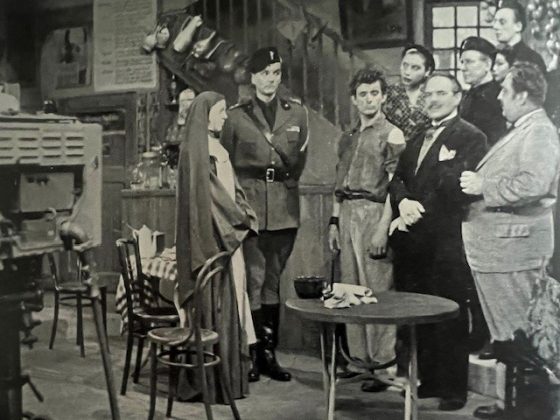
ABOVE – ‘The Affair at Assino’ Broadcast 1 January 1953
Adapted for television by Nigel Kneale
[Starring] Robert Eddison, Hector Ross and Daphne Slater
It is 1938, and Mussolini is still more or less firmly in power in Italy. At the Ministry of the Interior it seems a normal enough evening; Colonel Passamonte, the military adviser, is making security arrangements for one of the Duce’s speeches. Then the phone rings and the night is normal no longer.
It appears that the Minister of the Interior, being in a hurry, tried to drive through a holy procession in a small hill town, with the result that the irate locals overturned his car and even threw tomatoes at the Minister himself. The name of the offending place? Assino. The horrified Passamonte finally finds it on the map; clearly the town must be punished and its dangerous insurrectionists routed out. Accordingly, two lorry-loads of Fascist militia descend on sleepy little Assino, whose crime was to want to hold its procession in peace. It is a situation full of tragic possibilities, but Mr. Hunter brings out the comic results just as strongly as the dramatic.
Place your comment